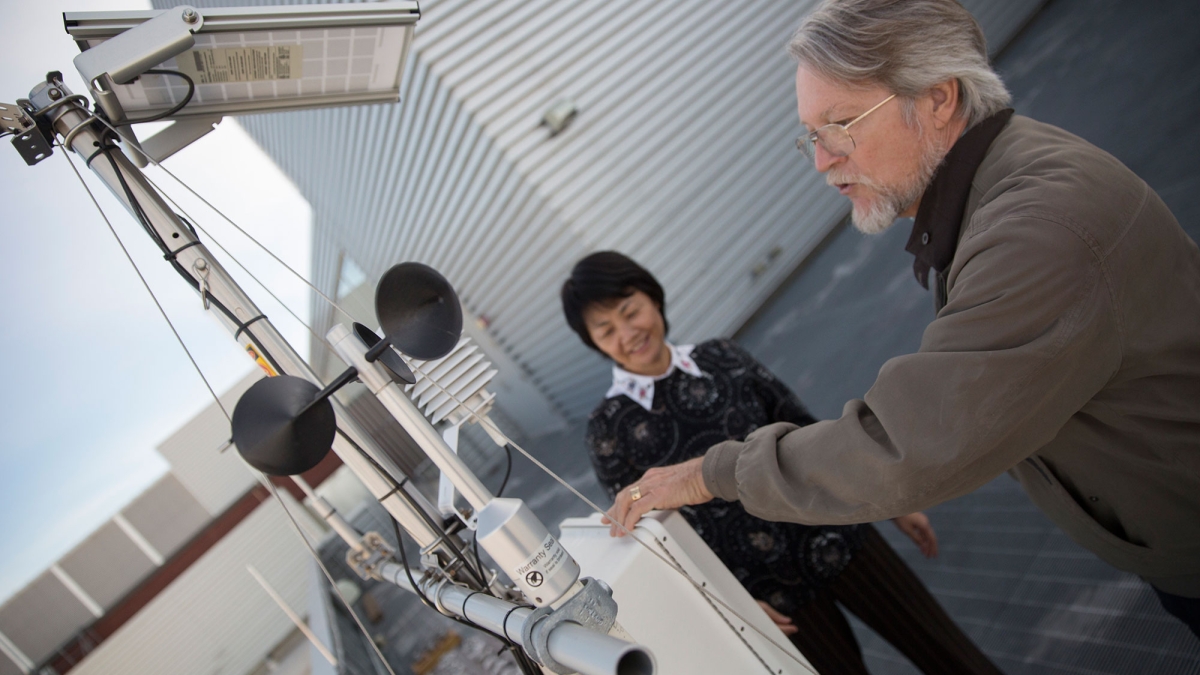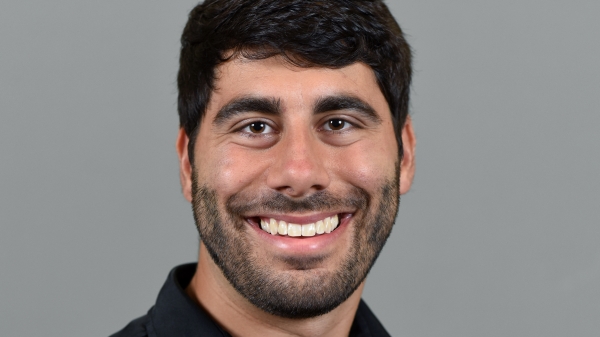ASU website provides precise snapshot of local weather, available to the public
Amateur meteorologists and researchers can access data from Tempe monitoring station

Researchers and weather-watching enthusiasts can now tap into local meteorological data gathered by the Center for Negative Carbon Emissions at Arizona State University.
The center’s team has installed a weather station atop the seven-story building where its laboratory is located on ASU’s Tempe campus.
The station is equipped with an array of sensors and other components that monitor and measure temperature, humidity, air pressure, wind speed and direction and light intensity around its location.
The data — going back to March 2016 — is updated monthly and posted on the center’s website, from which the information can also be downloaded.
“It provides a neat, precise, archived snapshot of the meteorological date for this area,” said Allen Wright (pictured above), the executive director of the center operated by the School of Sustainable Engineering and the Built Environment, one of ASU’s Ira A. Fulton Schools of Engineering.

The monitoring station atop Interdisciplinary Science and Technology Building 4 on ASU’s Tempe campus measures an array of weather conditions. Photo by Pete Zrioka/ASU
The center’s research staff uses the information to look for correlations between weather conditions and the performance efficiency of the air-capture devices in its lab.
The center focuses on developing and implementing the next generation of carbon-management technologies to help reduce the atmospheric concentrations of carbon dioxide that can negatively impact climate change and environmental health.
But Wright said the information provided by the weather station can also be helpful to other researchers doing experiments involving the effects of weather conditions on various materials, processes or systems.
The data may also be interesting to many amateur meteorologists and hobbyists who might want to compare the station’s readings with those from small home weather stations, he said.
For more information, e-mail cnce@asu.edu.
Top photo: Allen Wright (foreground) and Yun Ge check on the weather station used by researchers at ASU’s Center for Negative Carbon Emissions. Wright is the center’s executive director. Ge is a software engineer on the research team. Photo by Pete Zrioka/ASU
More Science and technology

ASU researchers develop special microphone to verify human speech
Deepfakes have become a large societal concern with the advent of video and audio content generated by artificial intelligence, or AI. A deepfake is a convincing imitation that blurs the lines…

Leading students toward a future of renewable energy
Nicholas Rolston, assistant professor in the School of Electrical, Computer and Energy Engineering, one of the Ira A. Fulton Schools of Engineering at Arizona State University, has found his passion…

SPARCS mission spacecraft bus delivered to ASU for final assembly
The Arizona State University team that is building the NASA-funded Star-Planet Activity Research CubeSat, or SPARCS, cleared a major milestone this week — receiving its spacecraft bus at the School…